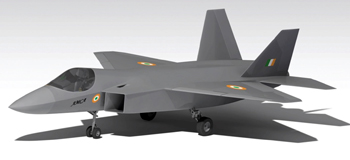INDIAN ARMED FORCES CHIEFS ON OUR RELENTLESS AND FOCUSED PUBLISHING EFFORTS

The insightful articles, inspiring narrations and analytical perspectives presented by the Editorial Team, establish an alluring connect with the reader. My compliments and best wishes to SP Guide Publications.

"Over the past 60 years, the growth of SP Guide Publications has mirrored the rising stature of Indian Navy. Its well-researched and informative magazines on Defence and Aerospace sector have served to shape an educated opinion of our military personnel, policy makers and the public alike. I wish SP's Publication team continued success, fair winds and following seas in all future endeavour!"

Since, its inception in 1964, SP Guide Publications has consistently demonstrated commitment to high-quality journalism in the aerospace and defence sectors, earning a well-deserved reputation as Asia's largest media house in this domain. I wish SP Guide Publications continued success in its pursuit of excellence.
- Indian Air Force Aims for Full Indigenous Inventory by 2047 — Air Chief Marshal A.P. Singh
- General Upendra Dwivedi takes over as the Chief of the Army Staff
- Rajnath Singh assumes charge as Defence Minister for the second consecutive term
- Admiral Dinesh K. Tripathi assumes Command of the Indian Navy as 26th Chief of the Naval Staff
- Prime Minister witnesses 'Bharat Shakti' – a Tri-Services Firing and Manoeuvre Exercise in Pokhran, Rajasthan
Russia to partner in AMCA technologies
 March 07, 2015: India has approached Russia to partner it on certain critical technologies for the Advanced Medium Combat Aircraft (AMCA). Top sources tell SP's that the Aeronautical Development Agency (ADA) has asked Russia for assistance in developing thrust vectoring and certain other technologies on the concept fifth generation jet platform. There has been steady progress in the programme following the basic design freeze. The ADA has opened discussions with turbofan houses in the US, Russia and Europe for what it believes need to be 110 kN engines in twin configuration for the AMCA. The engines will specifically need to support supercruise. The ADA has indicated to engine manufacturers that modifications could potentially be a joint effort in country, involving the DRDO and other agencies if necessary. Either way, the ADA has ambitiously aimed at producing up to four prototypes, with the first rolling out in 2019. As the ADA recently set down as the aircraft's profile and definition, "The AMCA is being designed as a stealth, medium weight, twin engine, multimission aircraft with a swing-role capability. Among the advanced technologies that confer stealth capabilities are serpentine air intakes, internal weapons bays, radar absorbing structure (RAS), radar absorbing materials (RAM), frequency selective surface radome and conformal air data probes. The avionics system features integrated modular architecture supporting NCW capabilities, advanced pilot-vehicle interface, pilot associate and integrated vehicle health management. The integrated flight and propulsion control system will combine the traditional flight control functions with thrust vectoring and engine control functions."
March 07, 2015: India has approached Russia to partner it on certain critical technologies for the Advanced Medium Combat Aircraft (AMCA). Top sources tell SP's that the Aeronautical Development Agency (ADA) has asked Russia for assistance in developing thrust vectoring and certain other technologies on the concept fifth generation jet platform. There has been steady progress in the programme following the basic design freeze. The ADA has opened discussions with turbofan houses in the US, Russia and Europe for what it believes need to be 110 kN engines in twin configuration for the AMCA. The engines will specifically need to support supercruise. The ADA has indicated to engine manufacturers that modifications could potentially be a joint effort in country, involving the DRDO and other agencies if necessary. Either way, the ADA has ambitiously aimed at producing up to four prototypes, with the first rolling out in 2019. As the ADA recently set down as the aircraft's profile and definition, "The AMCA is being designed as a stealth, medium weight, twin engine, multimission aircraft with a swing-role capability. Among the advanced technologies that confer stealth capabilities are serpentine air intakes, internal weapons bays, radar absorbing structure (RAS), radar absorbing materials (RAM), frequency selective surface radome and conformal air data probes. The avionics system features integrated modular architecture supporting NCW capabilities, advanced pilot-vehicle interface, pilot associate and integrated vehicle health management. The integrated flight and propulsion control system will combine the traditional flight control functions with thrust vectoring and engine control functions."





